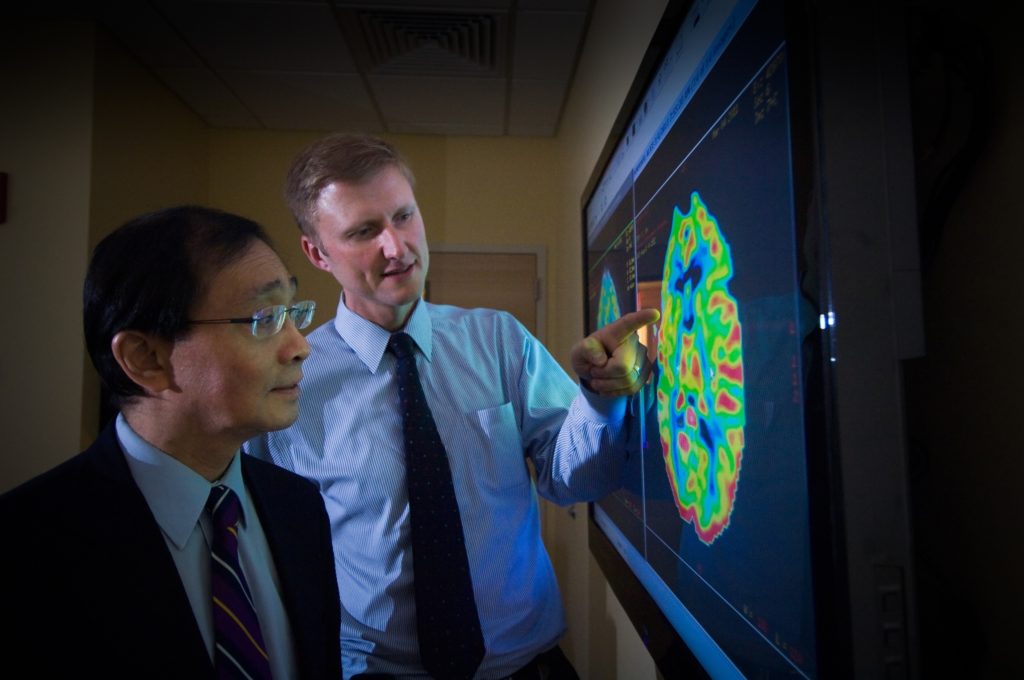…A round-up of recent brain tumor research news
New Revelations on Relationship Between Low- and High-grade Gliomas
A comprehensive genomic analysis of low-grade gliomas (grade II and III astrocytomas, oligodendrogliomas, and mixed gliomas) of The Cancer Genome Atlas brain tumor studies found that low-grade gliomas can be sorted into three categories based on their distinct molecular makeups, including one that had the characteristics of the high-grade glioma, glioblastoma multiforme (GBM).
This important revelation about the relationship between low- and high-grade gliomas was presented this week at the American Association for Cancer Research (AACR) 2014 Annual Meeting.
The study’s lead author, Dr. Roel Verhakk, PhD, of MD Anderson Cancer Center, explained the implication for patients in a news release: “The immediate clinical implication is that a group of patients with tumors previously categorized as lower grade,” and treated accordingly, “should actually be treated as glioblastoma patients and receive [the same] standard of care.”
This finding is critical, as GBM patients typically have poor outcomes. Thus, the knowledge that some low-grade gliomas also have these aggressive characteristics reinforces the need to find more and better solutions for patients. National Brain Tumor Society remains acutely focused on advancing research to find better treatments for glioblastoma multiforme through multiple integrated initiatives, particularly our Defeat GBM Research Collaborative.
Previously, a larger, multi-institutional group of brain tumor researchers – including many who authored the findings presented at AACR – conducted a major effort to analyze multiple GBM and grade II and III glioma datasets. Results unveiled shared patterns between the two groups of tumors. Further, their results indicate that GBM subtypes that are relevant to grade II and III gliomas could offer clues to disease prognosis, as well as how some tumors progress from low-grade to high-grade. This work was published on March 10th in the journal PLoS ONE, titled “Molecular Subtypes of Glioblastoma Are Relevant to Lower Grade Gliomas,” and first reported this association between high-grade gliomas and low-grade gliomas.
The researchers included two of the National Brain Tumor Society’s advisors, Drs. W.K. Alfred Yung and Kenneth Aldape.
Glioblastoma Multiforme Research Gets High Tech Boost
Mid-March brought welcome news that IBM’s Watson – the “super computer” famous for winning a game of Jeopardy – is partnering with the New York Genome Center to analyze the genomes of brain cancer patients.
The two groups will work together with a number of cancer centers to create a computing platform that can take patient information, compare it to large volumes of existing data, published research, and medical literature to recommend potential treatments. Ultimately, patients and physicians will need to make final treatment decisions, but Watson’s suggestions may help develop a more precise menu of options based on the particular molecular characteristics of a specific patient’s tumor.
Importantly, as we work toward better treatments, and ultimately a cure, Watson has the ability to accumulate data fed back into the system so that it can continually refine what it learns and translate that knowledge into more accurate suggestions for what treatments will work best. National Brain Tumor Society hopes this project can indeed refine and improve the knowledge-base for brain cancer treatments.
Revisiting the 2013 Avastin Clinical Trial Results
Dr. Susan C. Pannullo, MD, FAANS, recently authored a detailed analysis of the ongoing discussion that has followed the release of results from two large clinical trials last year on the use of the anti-cancer drug Avastin in newly diagnosed GBM patients. Writing for the publication Neurology Alert, Dr. Pannullo stresses that, though disappointing results, these studies “emphasize the value of rigorously performed randomized clinical trials.” However, she concludes, “these studies call attention to the need for refinement of imaging techniques used to evaluate response to brain tumor therapies.”
This last point is an issue that the National Brain Tumor Society is addressing with the Jumpstarting Brain Tumor Drug Development Coalition in the Brain Tumor Clinical Trial Endpoints Workshops. Dr. Pannullo, as a National Brain Tumor Society Board of Directors Member and advisor, is helping lead this effort.
Recently, the U.S. Food and Drug Administration asked Dr. Pannullo to serve on their Orphan Products Grants Program Neuro-oncology Panel. This program helps provide funding for critical research for rare and orphan disease, such as brain tumors.
Dr. Pannullo is a member of the National Brain Tumor Society’s Board of Directors and also serves on our Medical Advisory Board and Scientific Policy Committee. In her day job, Dr. Pannullo is an Associate Professor of Clinical Neurological Surgery and Director of Neuro-Oncology at Weill Cornell Medical College/New York-Presbyterian Hospital.
If you want to read more of Dr. Pannullo’s analysis you can subscribe to Neurology Alert here.



